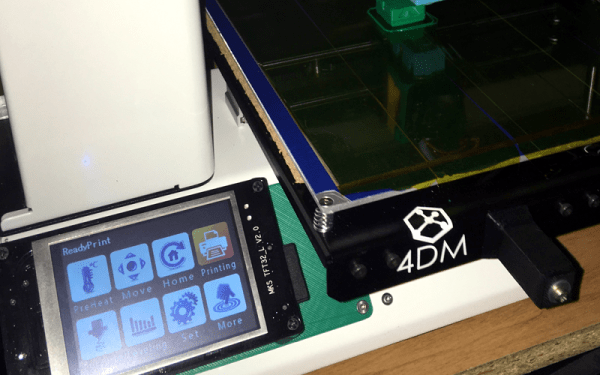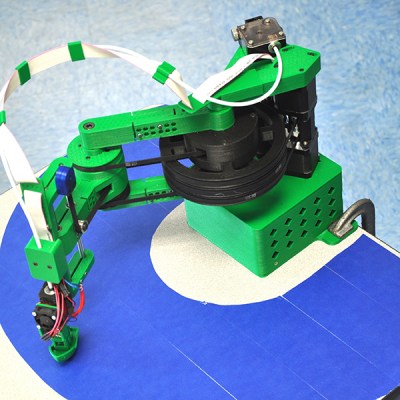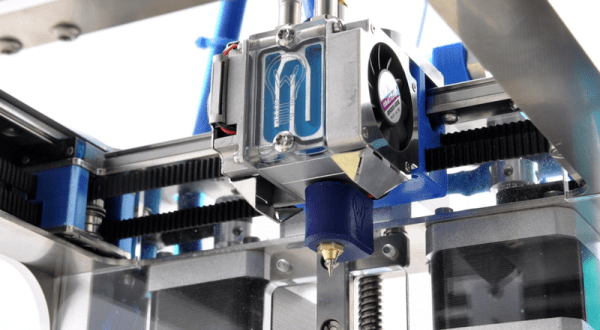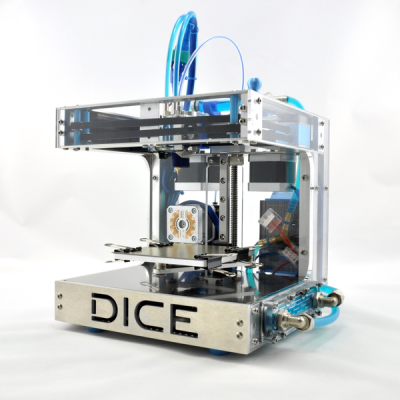Very rarely do we see a 3D printer that is more than just a refinement of what’s currently standard practice. [Prusa]’s single-hotend, four-color printer makes the list, but that came out a while ago. The novel 32-bit controller board found in last year’s $200 Monoprice printer has the potential to change a cottage industry. Save those two exceptions, innovation in 3D printing really isn’t seeing the same gains we saw in 2010 or 2011.
 A company out of the Netherlands, Blackbelt 3D, is bringing out the most innovative 3D printer we’ve seen since last March. It’s an infinite volume 3D printer that’s built for autonomous production. This printer can produce row after row of 3D printed parts, or it can print an object longer than the build plate. If you have enough time, filament, and electricity, there’s no reason you couldn’t print a plastic beam hundreds of meters long.
A company out of the Netherlands, Blackbelt 3D, is bringing out the most innovative 3D printer we’ve seen since last March. It’s an infinite volume 3D printer that’s built for autonomous production. This printer can produce row after row of 3D printed parts, or it can print an object longer than the build plate. If you have enough time, filament, and electricity, there’s no reason you couldn’t print a plastic beam hundreds of meters long.
The specs on this printer are about what you would expect from a large machine meant for industry or prototyping, as opposed to a machine designed to print out tugboats and fidget spinners. The Blackbelt uses interchangeable print heads for the hotend with 0.4, 0.6 or 0.8 mm nozzles. The filament feed is a Bowden with the extruder hidden under the control panel. The frame is explicitly Bosch extrusion, and the machine’s build volume is 340 mm by 340 mm by whatever. Retail price (on Kickstarter) comes in at €9,500, but for an extra €3,000 you can also get a neat stand with casters on the bottom. Of course, with an infinite build volume, you could also print a stand. Continue reading “Another Printer With An Infinite Build Volume”





 [Nick] is designing a new kind of RepRap,
[Nick] is designing a new kind of RepRap, 

 [René] had built a few 3D printers before, so he had a good feel for the parameters and design tradeoffs before he embarked on the DICE project. Making a small print volume, for instance, means that the frame can be smaller and thus exponentially more rigid. This means that it’s capable of very fast movements — 833 mm/s is no joke! It also looks to make very precise little prints. What could make it even more awesome? Water-cooled stepper motors, magnetic interchangeable printheads, and in-built lighting.
[René] had built a few 3D printers before, so he had a good feel for the parameters and design tradeoffs before he embarked on the DICE project. Making a small print volume, for instance, means that the frame can be smaller and thus exponentially more rigid. This means that it’s capable of very fast movements — 833 mm/s is no joke! It also looks to make very precise little prints. What could make it even more awesome? Water-cooled stepper motors, magnetic interchangeable printheads, and in-built lighting.













